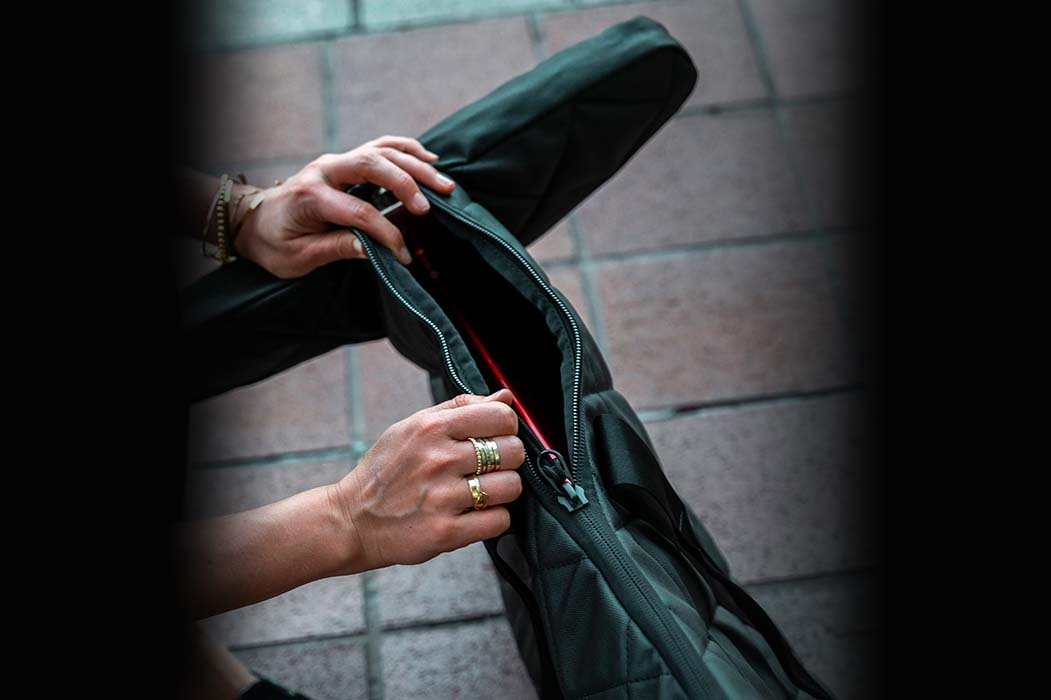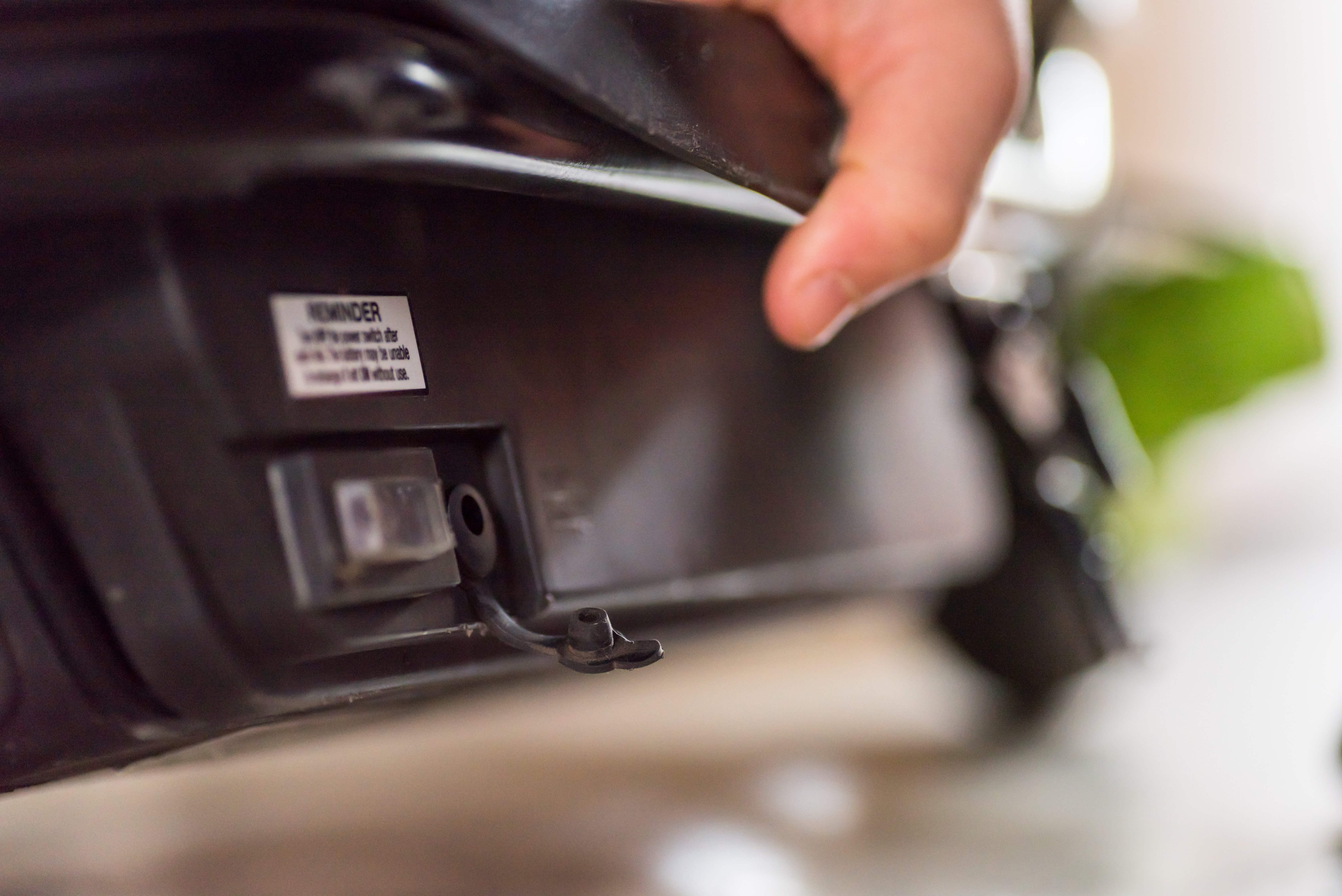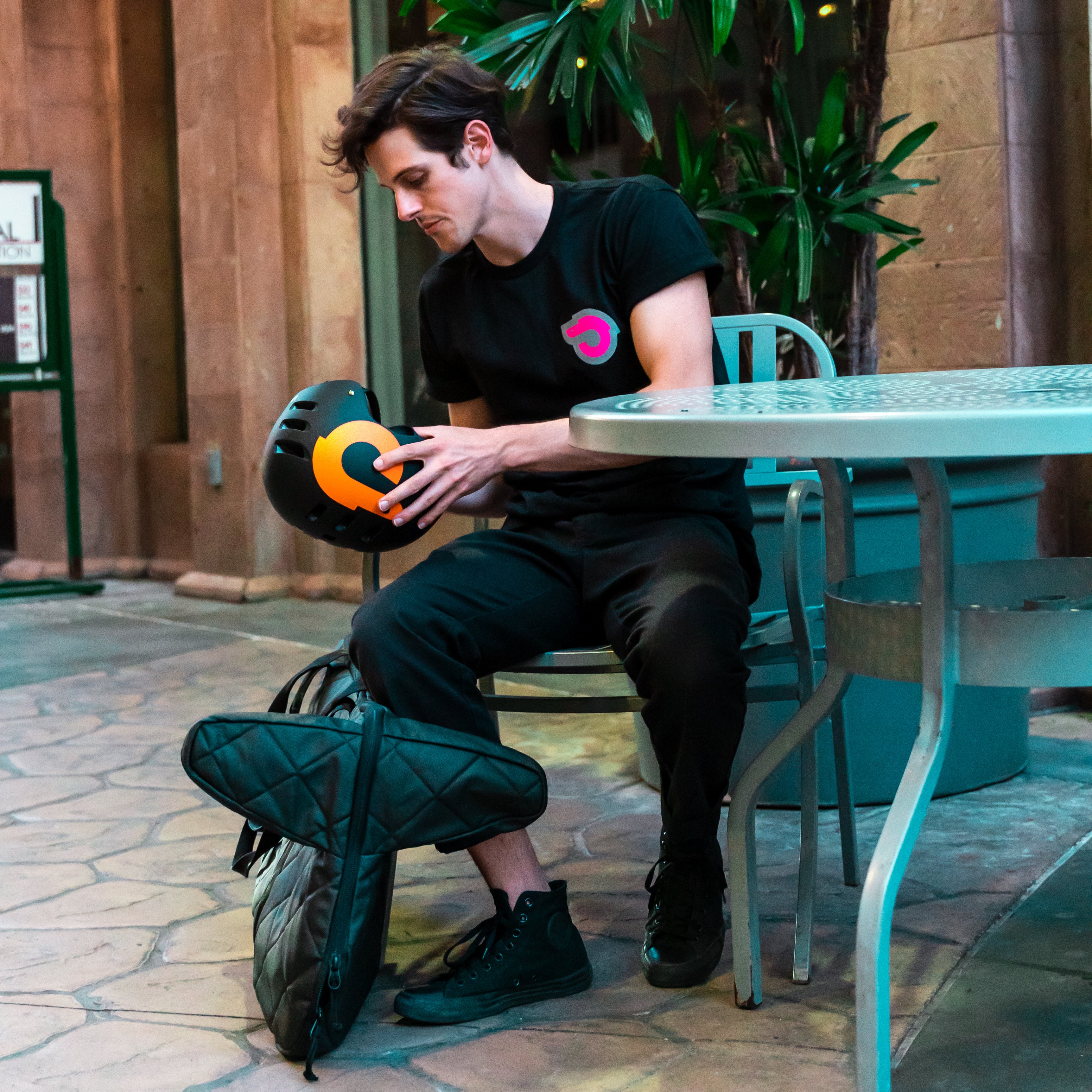Micromobility is here to stay, and it’s changing how we experience urban life for the better. With Unagi’s membership program, you can enjoy all the benefits of a top-tier electric scooter without the sky-high price of ownership or the inconvenience of ride-sharing.
Have you found that your electric scooter no longer rides as smoothly and efficiently after several months of not using it?
How and where did you store it?
Proper maintenance and storage can help prolong the life of an electric scooter and ensure that it continues to ride well for years to come.
Here are a few tips on how to store your electric scooter properly so it's in good condition when you take it out again.
Prepare the Electric Scooter for Storage

Here are a few tips on how to prepare your electric scooter for storage:
Clean the Electric Scooter Before Storage
Make sure to remove any dirt or debris from your electric scooters before storing them away. Dirt and debris can cause corrosion over time, negatively affecting performance later.
To do these, you need to:
- Start by removing any dirt, mud, or debris from the tires and wheels. A hose can be used to rinse off the tires and wheels, and a soft brush can be used to remove any stubborn dirt or grime. Don't use the hose to wash the entire electric scooter because if you get water in the electrics you might damage them.
- Next, wipe down the entire body of the electric scooter with a damp cloth and mild soap solution. A soft brush can be used to reach tighter spaces. Pay special attention to areas where dirt or grit might have accumulated, such as around the handlebars or near the footrests.
- Rinse the electric scooter carefully.
- Once your electric scooter is clean, dry it off completely. You can let the electric scooter dry off for a few minutes in the sun or use a blower to disperse the water. Be sure to get rid of any excess water that could cause rusting or other damage while in storage. You may even want to wax the body of your electric scooter to give it an extra layer of protection against the elements.
Lubricate the Moving Parts
Apply a light lubricant layer to any moving parts on your electric scooter, such as the folding mechanism, chain, or wheel axle.
This will help prevent rust and keep things operating smoothly in springtime or when the electric scooter needs to be used again.
Use any light oil, silicone lubricant spray, or sewing machine oil for this process.
Apply Anti-rust spray to the scooter
It's always a good idea to apply an anti-rust spray or corrosion inhibitor to your electric scooter before long-term storage, especially if it will be stored in an environment that might be humid from time to time.
This will help protect any exposed metal from rusting and prevents corrosion. You can also wax the electric scooter as alternative protection against rust.
Additional Preparation Notes
- Remember to turn off the power to the scooter before placing it in winter storage for a few months.
- Fold the scooter and securely lock it. The folded dimension will definitely take up less space in storage.
- If you still have the original box the scooter arrived in, you can place it inside the box and pack it with any protective foam packaging materials that came with the box. This will help keep the scooter clean and dust-free while in storage.
Storage Location
Location is key when storing a scooter for the long term. The right location can help protect your scooter from the elements and keep it in good condition. There are numerous factors to consider when choosing a proper storage location for your scooter, as outlined below:

The Perfect storage Area
Scooters are delicate machines that need very special care when handling and storing. Ideally, the electric scooter should be kept in a clean and dry place and a dust-free environment.
Below are the most important factors to consider when choosing a storage area:
- Choose a dry, sheltered spot out of direct sunlight. The sun’s rays can cause the plastic and rubber components of the scooter to break down over time. A garage, basement, or attic is perfectly reasonable, but if you don't have access to one of these, you can store it in your closet if it's big enough.
- Avoid areas that are prone to flooding or excessive moisture. Moisture can damage the scooter’s electrical components and lead to rusting.
- It is equally important to ensure the area is clean and free of dust. When there is too much dust on the scooter, it can increase the friction between the moving parts. This can lead to the parts wearing down more quickly or even becoming jammed. Additionally, the dust may penetrate the internal electrical components of the device. This can cause shorts and overheating risks.
- Make sure the area is well ventilated to prevent condensation from building up inside the scooter.
- Ensure the storage area's temperature is controlled and close to room temperature. This is because extremely high or low temperatures can lead to a decrease in battery performance and lifespan. In general, the recommended storage temperature for lithium batteries is 15°C. However, this may vary depending on the type of battery used in your scooter. So, it's important to check the manufacturer's recommendations before choosing a storage location. Ideally, it would be best if you aimed to store your scooter in an area with a temperature range of 10-30°C. This will help keep the batteries in good condition and maximise their lifespan.
- If possible, raise the scooter off the ground to prevent it from sitting in pooled water or puddles. This will also help in preserving the tires.
- You'll also want to ensure the location is secure, as many people love electric scooters, and they can be stolen quite easily. Store the scooter inside a locked space such as a garage or shed if possible.
Where Not To Store a Scooter
Some locations aren't ideal when coming up with electric scooter storage ideas. Certain rooms in your home are just not suitable for storing a scooter. These include rooms prone to moisture, flooding, extreme temperatures, or lack of ventilation. Here’s a closer look at each of these problem areas:
- You should avoid storing your scooter in any place that is full of moisture. Moisture is the enemy of any scooter. When stored in a damp environment, electric scooters are susceptible to rust and other forms of damage. If you must store your scooter in such areas, be sure to use a dehumidifier to keep the air dry (this is, however, a relatively expensive method).
- It's also not ideal to store an electric scooter in a room that is close to a heat source--extremely cold weather sometimes calls for the use of heaters or furnaces, while some storage spaces are close to appliances like water heaters. Extreme heat can cause problems with the electronic components.
- Extremely cold room: Just as you wouldn’t want to store your scooter in a space that’s too hot, you also don’t want to put it in a room that’s too cold. Extreme cold can damage the battery and other electrical components.
- Finally, you want to avoid rooms that are prone to flooding.
How to Take Care of the Different Scooter Parts Before Storage
Here are a few steps on how to prepare and store electric scooter parts as you get ready to retire your electric friend for a few months:

Electric Scooter Battery and Related Components
The battery provides the juice needed to run your scooter. As such, it requires very intricate care practices to preserve its life cycle capacity and ensure that it serves your scooter optimally, even after a few months of no use.
To achieve this, you need to consider the following:
- To properly take care of your scooter's battery before storage, you need to charge it to 40-60% of its total capacity. Do not fully charge it to 100% or leave it in a depleted state; both of these actions will negatively impact your electric scooter battery life and capacity.
- If you have a trickle charger, you can use that to keep the battery charged; otherwise, you'll need to check on it periodically and charge it as needed-make sure it doesn't dip below the 40% mark.
- Use only the original charger to charge the battery. This will help prevent overcharging or undercharging, which can damage the electric scooter battery capacity.
- When you charge your electric scooter's battery, it is important to make sure that the temperature in the room is within a safe range. The ideal temperature for charging lithium-ion batteries is between 5 °C and 45 °C (32 °F to 113 °F). Charging a lithium-ion battery outside of this temperature range can be detrimental to the battery life.
- Disconnect Battery - If possible, disconnect the electric scooter battery before storing it away. This will prevent the scooter from passively draining power and prevent corrosion on the connections. This will go a long way in preserving and keeping your battery in excellent condition. After disconnecting the battery, take that opportunity to check connectors, wiring and general battery area for any visible faults.
- You'll want to close the charging port on your electric scooter properly to prevent moisture from getting inside.
- Most electric scooters come equipped with Lithium-ion batteries that are sensitive to temperature changes. So It's important to store them at temperatures between 10°C and 30 °C (with the sweet spot being 15 °C) to prevent damage or loss of the battery capacity over time.
Tyres
When storing your scooter for an extended period, it is vital to take care of your tyres. This will help to ensure that they remain in good condition and do not suffer any damage.
Depending on how you store your electric scooter (suspended or on the floor), the pressure in the pneumatic tyres will need to be adjusted.
- If you are suspending your scooter, it is recommended that you deflate the tyres to half of the manufacturer's recommended values.
- If you store your scooter on the floor, you can leave the tyres inflated to the maximum manufacturer's recommended values. This will help keep the tyres in good shape and prevent any flat spots from forming.
- On the other hand, solid tyres require far less regular maintenance than pneumatic tyres. Keep them away from corrosive materials that could damage the tyre or affect its structure and composition.
Either way, it is crucial to check on your tyres regularly to ensure that they are still in good condition. If you see any signs of damage, such as cracks or flats, be sure to replace the tyre before using your scooter again.
Cover the Scooter with a Tarp or Other Waterproof Protective Cover.
Covering your scooter with a tarp or other waterproof cover is an important step in protecting it during long-term storage. By doing so, you can help prevent moisture damage, which is one of the biggest threats to electric scooters during this time.
Additionally, a cover will protect your scooter from the elements and any dust buildup. Investing in a good cover and taking the time to properly cover your scooter before storing it away can help prolong its life and keep it in good condition.
Secure the Scooter
If you're lucky enough to own a high-end scooter, you'll want to take extra steps to protect it while in storage.
A simple cable lock, heavy-duty chain or any external locks can deter thieves and help keep your scooter safe. Just be sure to secure the scooter to a permanent structure in the storage location, as scooters are light and easy to carry, so it's important to make it as difficult as possible for would-be thieves.
Some scooters also come with anti-theft features, such as the ability to disable the scooter’s motor and electricals via a user app. Be sure to activate this before storage.
Taking these precautions can help keep your electric scooter safe and sound.
Can you Store an Electric Scooter Outside?
While it might be tempting to store your electric scooter outside to save space, there are several reasons why this is not a good idea.
First of all, scooters are delicate machines, and they can be easily damaged by exposure to the elements. Moisture, dust and extreme temperatures can all take their toll on the scooter's components, leading to premature wear and tear.
In addition, scooters are very easy to steal. If you leave your electric scooter parked outside overnight, there's a good chance it will be gone in the morning unless you are living in a very secure neighbourhood.
E-scooters are small in size and can fit in a number of areas, e.g. even your closet, without taking up so much space, so you shouldn't use this as an excuse for storing your electric scooter outside.
All in all, it's best to keep your scooter indoors, where it will be protected from the elements and safe from thieves.
After Storage Practises
When removing your e scooter from storage, there are several things you should check to ensure it is in good working order.

Here is a list of the most critical areas to inspect: :
- Brakes -Take a moment to inspect the brakes on your e scooter. Look for any signs of wear and tear, such as cracks or fraying in the brake pads. If they need to be replaced, do so before using the e scooter.
- Electrical parts and controls - Inspect all wiring for signs of wear or damage. Check all lights and indicators to make sure they are working properly. Then, test all the controls - the accelerator, electronic braking, and bell/horn - to ensure they're functioning correctly.
- Motor - You should listen to any strange noises coming from the motor and ensure it works perfectly without disruptions.
- Tyres - Check for any cracks or damage to the tyres and then inflate them to the correct pressure.
- Inspect for any wear, rust and tear - this can cause a drop in performance. Check all moving parts for signs of wear and perform the necessary maintenance or replacement as needed.
- Charge the electric scooter to 100% - this will ensure optimal performance.
- Ensure all nuts and bolts are tightly screwed - loose components can cause problems while riding.
Final Thoughts
Summertime is a great time to get out and explore your neighbourhood on an electric scooter. However, when the weather turns cold during the winter months, your riding days may need to take a back seat.
And with that, it's important to know how to store your electric scooter properly so that it stays in good condition through the period when you won’t be using it regularly.
Properly storing your electric scooter is important to maintain the longevity of the electric vehicle and ensure that it’s ready for use when you remove it out of storage. With a bit of care and attention, your electric friend will provide years of trouble-free transportation.

Stay current with the latest U.S. electric scooter laws in our 2025 guide. Updated annually since our first comprehensive guide, ensuring you have the most recent state and city regulations to ride responsibly”

The Slack Core 920R is currently the fastest electric scooter in 2025 that you can purchase without the need for pre-order.

Our selection of the best electric scooters 2025 spans the fastest e-scooters to the most portable ones, the ones designed for city riding and off-road, the best scooters for rain, budget electric scooters for students, and more powerful ones for skilled riders.

The Unagi Voyager is the best lightweight electric scooter for adults and teenagers. It is the ultraportable sequel to its predecessor, the Unagi Model One Classic.

If you're wondering whether an electric scooter with a seat is right for you, this is a detailed article that would suit your need.

Understand which personal electric vehicle is best, the choice between an electric bike or electric scooter might already be made for you by some critical factors, including portability and storage capacity.

In the U.S., most states don't require a license. For those that do, they usually just ask for a regular driver's license or a learner's permit.

Yes, you can bring an electric scooter on a plane, but it needs to have a lithium battery smaller than 100 watt-hours, which most don't.

Manufacturers advise against riding electric scooters in the rain. The main reasons are: water can fry the electronics, make the ride dangerous, and void your warranty.

The basis and the premise of my work is that we either operate out of love or we operate out of fear...Time is currency. The coolest thing about the scooters is that it's really quick, and it goes uphill. From there, traveling more efficiently and having a good time doing it--I think that's the most important thing.

Cynthia Leu has a full plate. A tech worker by day, Cynthia spends her off time balancing the parallel lives of a powerlifter, entrepreneur, mental health advocate, and more. Riding Unagi helps this USMC veteran cut down on everyday…

https://www.youtube.com/watch?v=7m2hVBE62LY Rasheed Muhammad is sick of Los Angeles traffic. In order to preserve his sanity, Rasheed has traded his everyday driving habit for the portable and beautiful Unagi Model One. It’s an essential accessory for navigating LA streets -- and…

Rich Lee, Co-Founder of San Francisco’s SPRO Coffee Lab, wants to share his love for coffee with the world. He depends on riding Unagi to avoid the hassle of navigating the parking crunch in the booming Mission Bay neighborhood.…












